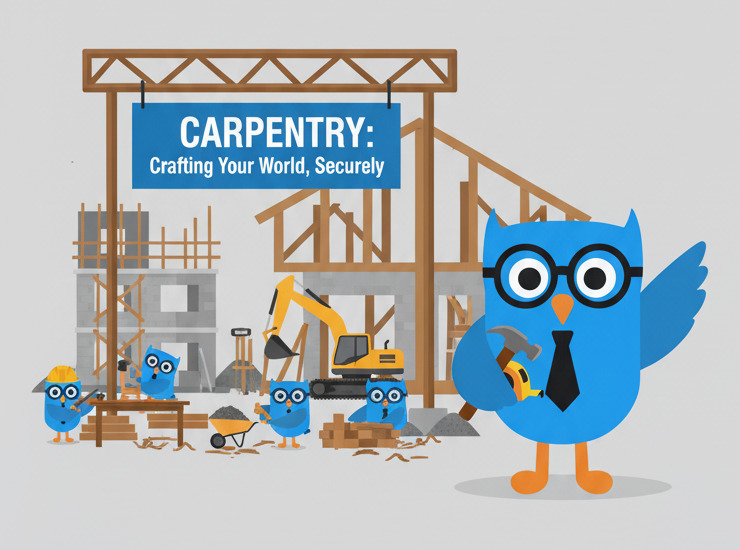Carpentry Contractors: What Coverage You Need & Tips to Avoid Costly Mistakes
Mr. Hoots digs into the ins and outs of insurance for carpentry pros from tool protection to liability, audits, and smart safety habits.
Hoo’s there? Mr. Hoots here, up in your rafters. If you swing a chisel, frame a roof, or build custom cabinets, let’s talk the insurance moves that protect your business (and your bottom line) when your sawdust settles.
What kinds of risks do carpenters face?
- Tool theft, breakage, or damage on-site
- Property damage (you nick a wall, puncture plumbing, scratch tiles)
- Bodily injury (cuts, falls, muscle strain)
- Contractual demands from general contractors (GCs often require proof of coverage)
General Liability & Property Coverage
These are your foundation:
- General Liability (GL) covers claims like “you hit my window” or “dust ruined the flooring.”
- Inland Marine / Tools & Equipment protects your portable tools, saws, compressors, etc., when they travel or get used in different locations.
- Builder’s Risk (if doing new builds or remodels) covers damage during the course of construction (fire, vandalism, storm).
Do I need Workers’ Comp too?
If you’ve got employees (or helpers under your direction), yes, many states require it, and GCs often demand it. Even if you’re solo, sometimes permit or contract rules force your hand.
Owner inclusion vs. exclusion
- Include the owner(s)/officers you’re covered if you step on a nail.
- Exclude the owner(s) saves on premium, but you lose coverage for yourself.
- Contracts or permit rules may force you to include owners anyway.
Subcontractors & COIs
- Always collect certificates of insurance (GL + WC) from your subs
- Document when, where, and how they’re used
- If a sub lacks proper coverage and gets injured or causes damage, your policy may kick in
Smart safety moves (they also help your rate)
- Sitewalks + hazard checks daily
- Use fall protection, guards, PPE
- Toolbox talks & documented safety meetings
- Track and analyze minor incidents to prevent big ones
What I’ll ask you to quote your policy
- Your legal business name, structure, FEIN
- Description of carpentry work / trade mix
- Estimated payroll by role (employees, owner(s))
- Subcontractor use: % and trade types
- Tool list (value, makeup)
- Desired limits (liability, property, etc.)
Common questions
Can I pay monthly?
Depend on carrier / premium size – often yes.
Does an IC (independent contractor) always avoid WC issues?
Not necessarily. If you control how/when/where they work, state or GC might treat them as employees. Get their COIs or plan accordingly.
What if I don’t carry certain coverage?
You risk fines, contract denial, lawsuits, or having to cover damages out of pocket.
Mr. Hoots’ Bottom Line
Carpentry is precision work, your insurance should be too. You can’t control every mishap, but you can control your coverage and safety. Hand me your trade details, and I’ll hoot back with a package built for your saws, studs, and survival.

